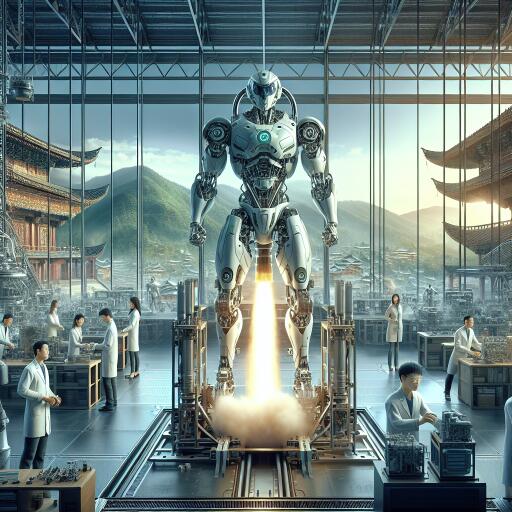China Launches Sophisticated Humanoid Robot: A Glimpse into the Future
In a revolutionary leap forward in the realm of robotics, China has unveiled a new humanoid robot that marks a significant milestone in the field. Developed within the Beijing Economic Development Zone, this innovative robot stands at a height of 163 cm (approximately 5 feet 4 inches), heralding a new era of robotic capabilities and potential.
The robot, named Tiangong, showcases impressive specifications that set it apart from its predecessors. It boasts the ability to operate at speeds of up to 6 km/ph (approximately 3.7 mph), combined with a lightweight design weighing in at 43 kg (around 95 pounds). These features enable Tiangong to maneuver with an agility and finesse unprecedented in humanoid robotics.
At the core of Tiangong’s cutting-edge technology is its array of multiple visual perception sensors which grant it a remarkable depth of environmental awareness. Complemented by a formidable computing capability of 550 trillion operations per second, Tiangong can process and interpret its surroundings with astonishing precision. This processing power is further enhanced by a high-precision inertial measurement unit (IMU) and a 3D vision sensor, equipping the robot with an incredibly nuanced perception of its environment.
However, what truly sets Tiangong apart is its innovative approach to learning and adapting to new tasks. The robot employs a novel learning method known as “state-memory-based predictive reinforcement imitation learning.” This technique allows Tiangong to acquire and refine motor skills in a manner that closely mimics human learning processes, enabling it to tackle complex physical tasks with remarkable efficiency.
During a recent press conference, Tiangong demonstrated its unparalleled adaptability to varied and complex environments. Observers were particularly impressed by its human-like gait and the seamless manner in which it navigated obstacles such as slopes and stairs. Furthermore, in scenarios where it encountered unexpected impediments, Tiangong showcased its ability to adjust its gait on the fly, maintaining stability and forward momentum even when stumbling.
This launch not only signifies a remarkable achievement in humanoid robot design but also opens up a plethora of possibilities regarding the future applications of robots in society. Whether it’s in assisting with tasks in hazardous environments, aiding in disaster relief efforts, or even performing everyday chores, the capabilities of robots like Tiangong could reshape the way we think about and interact with robots.
As we stand on the brink of this new era, the development of Tiangong serves as a profound reminder of the incredible advancements that are possible in the field of robotics. This humanoid robot not only pushes the boundaries of what is technologically feasible but also redefines our expectations of robots and their potential role in our world.










